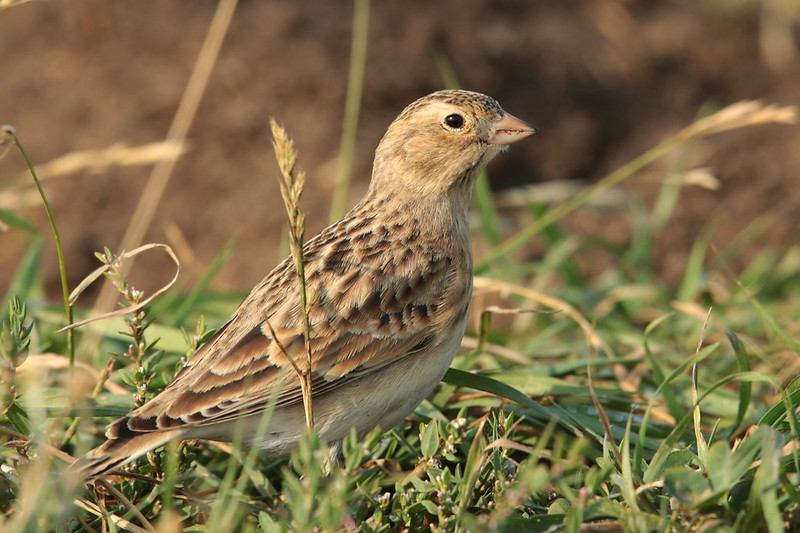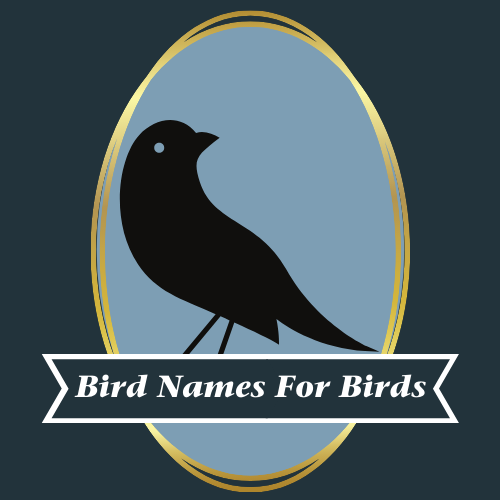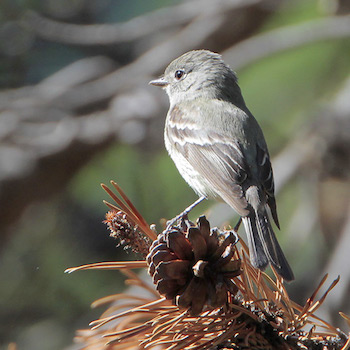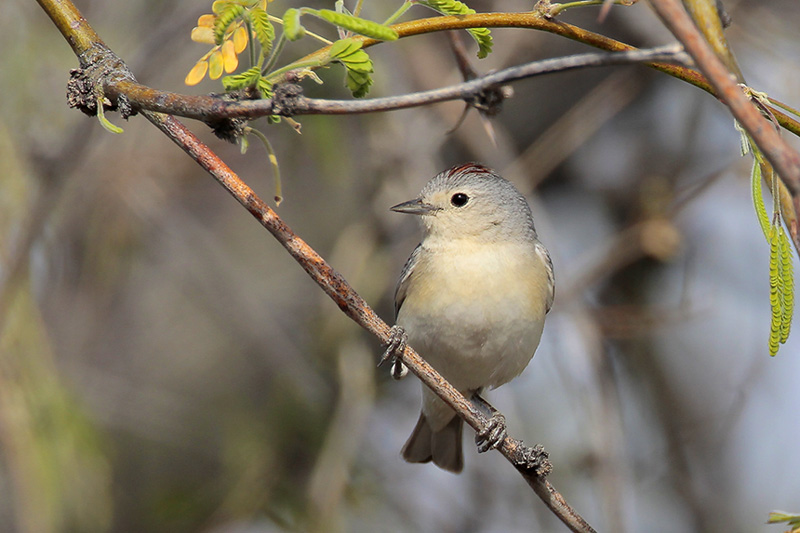

Join BirdNote tomorrow, November 30th!
Illustrator David Sibley and actor H. Jon Benjamin will face off in the bird illustration battle of the century during BirdNote's Year-end Celebration and Auction!

What’s in a name?
The names of some birds — such as the Spruce Grouse, Bald Eagle, and Long-billed Curlew — offer distinctive information about the bird or its habitat. But what about Bachman’s Sparrow, Bonaparte’s Gull, or Swainson’s Thrush?
There are nearly 150 species of North American birds with such eponymous and honorific names. And there is a movement to change those names — not only to celebrate the unique qualities of the birds, but to address the problematic histories behind some of the names.
The American Ornithological Society’s North American Classification Committee recently responded to community concern about McCown’s Longspur by renaming it the Thick-billed Longspur. But organizers of the Bird Names for Birds campaign are making the case for changing all eponymous common names. BirdNote’s Mark Bramhill spoke with Jordan Rutter to better understand the campaign’s opportunities and challenges:
Mark Bramhill: So you're one of the organizers behind the Bird Names for Birds initiative. Can you tell me what the initiative is all about?
Jordan Rutter: Bird Names for Birds is an initiative focused on the English common names of birds. We're not focusing on the scientific names or anything that's part of the ornithology research aspect of birds. And the reason why I focus on that is because, when you think about it, this is much bigger than just a scientific concern or a niche issue. Because birds are everywhere! The English common bird names apply to folks that aren't “bird people,” right? Because in TV and movies, [and] books, there are references to these birds. And so they’re names that anyone could come across.

As a lifelong birdwatcher myself, I took them for granted and just sort of accepted them for years. They were just the names of these birds. But various events in 2020, as well as some proposals, especially Robert Driver’s [original proposal for McCown’s Longspur a few years ago], started raising questions about: where did these names actually come from? And we found out that these names are honorifics of predominantly white men with very concerning pasts, to say the least. Folks like Townsend and Bachman, these men that do not uphold the morals or standards that we would have today. And so a group of us said: this is something that we can do right now, today. It doesn't take anything but willpower for us to make a positive change. So how do we basically change these verbal statues of the past and help make the birding community a more welcoming and inclusive space? And so the initiative is trying to highlight the issue at large, and then say: let's do something about this and make things better.
Mark Bramhill: Focusing on the common names makes a lot of sense. People who aren't birders or are very casually interested, that's probably all they're ever going to interact with. And that's something which really is how these birds kind of get defined to a lot of people.
Jordan Rutter: Yeah, and you could say “well people don't know the history of those names,” or “they should just accept the names and move on.” But there are these verbal statues that are casting shadows on the birds that we all just want to enjoy.
Mark Bramhill: Yeah. I really like that phrase, verbal statue, I feel like that really captures that these eponymous names are upholding and to some degree celebrating these people, in a way that it's pretty easy to not be conscious of if you don't do that kind of deeper questioning.
Jordan Rutter: Exactly. And it's really interesting because a lot of the opposing side of this issue, they echo a lot of the other arguments being made for actual Confederate statues being removed right now, which include things like: we're removing history, we won't learn history — I've never had a bird give me a history lesson. And I've gone decades of not ever being taught what these names mean, where they came from, how they're decided on.
We want to just let birds be celebrated for birds. There's a way for us to remember and learn the history of ornithology and people who have contributed to it, that can be separate from the actual birds. And there's so much possibility when you have a more descriptive name for birds. And so that's a huge aspect to making birding more accessible and inclusive, because you're helping everyone learn those birds.
Because, can you tell me what a Bachman's Sparrow is or looks like or where it lives or anything like that? So I think we need to not underestimate [how many] many good possibilities [new bird names offer] moving forward.

Mark Bramhill: What has the response been like in the scientific and birding communities? What kind of reception have y'all received for this initiative?
Jordan Rutter: So the initiative started with a letter that was co-signed by 182 people. And it was turned into a public petition to make it a little bit more broader and truly community oriented; that way anyone that wanted to join this initiative could join us. The petition timed out on August 15th and we had over 2,500 people sign the petition. So we have a very large group supporting this. But we of course also have an opposing party that is resistant to change and is using a lot of common arguments including things like nomenclature stability — “how will people know what you're talking about? Let's make sure that the names are stable and consistent.” Other arguments include things like “we're going to be erasing history, forgetting history, not teaching it.” There's a lot of resistance to change and none of the opposing arguments yet have been showing understanding of the equity, diversity and inclusion components to this entire issue. And again, we're not just doing this initiative because we're trying to be difficult. One person commented that we have too much time on our hands — if anything, I wish we could fix this and move on. There are definitely larger social justice issues that need to be addressed right now. And it's very frustrating because this is just the tip of the iceberg. And it's highlighting so many important conversations that we need to be having which makes me feel very motivated to keep working on this and show that this is connected to other issues, both in the bird community and at large.
Mark Bramhill: Yeah. You've argued for removing all eponymous names, not just for some of the figures you've mentioned. Why all eponymous names? Why not just people who did something notably abhorrent or some sort of dividing line?
Jordan Rutter: Yes. So that's another huge concern that folks have raised for sure. We are very adamant that we have to remove all eponymous names, 150 in North America alone, because as white people, we cannot say what is racist or not. If these are verbal statues, then even the less abhorrent individuals are still perpetuating the [system where] white people first described these birds, named them after other white people, and white people are making these decisions about bird names. What needs to happen is for us to build an equitable system that shows that we are more than that; that we are both focused on the birds and that we've incorporated all stakeholders in the decision making. Right now there's no BIPOC [Black, Indigenous, and People of Color] community member that has been truly listened to in regards to what the bird names should be or how the system should be set up.
Mark Bramhill: I'm curious, as you learned about more of these birds and the origins of their names, did it surprise you to learn about the people behind any of these names?
Jordan Rutter: Oh my goodness, yes. So obviously it takes time to do research and create the different biographies of the individuals that are represented by these eponymous names. There's a group of us working on them and honestly, I read some of these biographies and I just want to get as far away as possible. I honestly feel embarrassed that I have used these names or referenced them and didn't know their history. I mean, there are [people who] have done these really, awful, horrible, makes-my-stomach-turn-over things. And to think that we are honoring them instead of honoring the birds is just — it's mind boggling. And I personally think that once you read these, it should make you wonder why we didn't address this sooner. This issue is so overdue and to be honest, it's just embarrassing.
Mark Bramhill: Are there any specific examples that come to mind?

Jordan Rutter: Yeah. So, Hammond’s Flycatcher is named after William Alexander Hammond, who was a U.S. surgeon general. And, he actually was part of phrenology which was using scientific research to try and justify white supremacy by showing that there were actual differences between races and body characteristics. And this really esteemed physician more or less asked soldiers to kill, or somehow collect [the bodies of] indigenous people for him to study. How are you supposed to be okay with [that]? Instead of focusing on that bird, now all I can think about is this person and the awful things that he was involved with.
And I'll admit, I could have easily referenced Audubon right now, but this goes so much deeper and farther. And I think Audubon has a pretty complicated aspect. But to be honest, I believe that Audubon's Shearwater and Audubon's Oriole should be renamed. And we should own the fact that we have this horrible past and we need to deal with it.
Mark Bramhill: Another question I have then: for someone who does really look up to John James Audubon for the contributions he did make to the study of birds, or, some other person who one of these birds is named after, and still wants to be able to celebrate them. What would you say to someone who feels that way?
Jordan Rutter: I think what we need to start doing is not ignoring the whole picture of our history. It's very easy to focus on the most impressive or most applicable to what you're either interested in or trying to convey. And so you can't argue that Audubon both personally and just the idea has impacted ornithology and bird conservation. And so teasing apart that good from the rest of his actions, which included decapitating [fallen] Mexican soldiers for scientific studies, is something that I think we just have to realize. We have to make more effort to truly tell the whole story. Why are you focusing on only the good bird contributions of all of these people and not the rest of them? And it's uncomfortable and it's hard, and it has taken us doing a lot of research to learn these things. But that doesn't mean that we shouldn't or that we can't. It truly, again, comes back to willpower and the fact that we need to make sure we're all encompassing.
I guess my other real thought for that is a question: why are you focusing so much on this one individual and not acknowledging all of the contributions of everyone else that helped? So, specifically we know various individuals, including Audubon and even Alexander Wilson and others that have eponymous names, were greatly aided by indigenous peoples. And those stories are never told. They're never highlighted. And so why only focus on that one individual, when there are so many others to be recognized and celebrated as well?
Mark Bramhill: I am curious, in doing all of the research about these people, are there any birds that are named after people that you do look up to or would feel at all bittersweet about having their name changed?
Jordan Rutter: It's a really good question; not all eponymous names are after men. Lucy's Warbler is an example, and there are some really beloved ornithology characters such as Alexander Wilson, who is commonly referenced as “a poor poet from Scotland.” But the thing is, they all were part of the colonial times and structure. And so, realizing that there was so much white privilege even during that time, and we need to focus on the birds, it all comes back to the birds. You could say that these individuals are on a spectrum in terms of their pasts and how horrible their actions were. But that is me as a white person saying that, and that is not justification enough to leave these eponymous names. That is not listening, learning, and making sure that the BIPOC community members have been listened to, learned [from], and respected.
So I think focusing on those bittersweet aspects is just one more resistance to this change that we really need to do.

Mark Bramhill: For people who maybe aren't in the bird world, just to set expectations: how long does it take to get a bird's name changed? Like how long does a process like this typically take.
Jordan Rutter: Yeah. That's a great question. The current structure right now is entirely proposal based. Proposals are submitted and reviewed once a year. And then the name is either changed or rejected. [The bird] previously known McCown's Longspur, named after a Confederate soldier, was decided on and renamed out of that [yearly] cycle in August of 2020. And it's now called Thick-billed Longspur. This is the first case ever to actually have a social justice or EDI (Equity, Diversity, and Inclusion) reasoning for a name change. No bird has ever had their name changed for a social justice cause before. So this is pretty huge. This bird though, had a proposal submitted a few years ago by Robert Driver and it was rejected. And a lot of the reasonings against the change from the ruling committee statement include things such as: we can't compare the time that McCown was living in with now, things are just being raised because of modern concerns for social justice, views of appropriate behavior and standards change over time — a lot of resistance to simply recognizing that this is an opportunity to make a positive change. So it took another proposal this year to get that name changed. This is a great first step but it's not the only one and it's definitely far from being over in terms of addressing this issue properly. So thinking about the fact that, under the current system, we have to write 149 other researched proposals to hopefully get these names changed. And then, who knows if all of those proposals would be reviewed all at once or if it'll take years?
The committee that is in charge of bird names could say, if they wanted to, “we're changing these bird names, send us proposals.” Right? We could skip ahead a few steps. They haven't yet, but they could. And so we were doing the math recently and between the time that the updated longspur proposal was submitted and when it got changed was two weeks. Which was incredibly fast. Again, it was out of cycle.
Hypothetically, say everything went that fast. So this is not counting the actual writing of the proposal time, this is just that time: two weeks times 149 birds divided by 52 weeks is still almost six years.
Mark Bramhill: And not including the time to write a proposal is very optimistic!
Jordan Rutter: Yeah! Especially because these proposals have to be researched and have supporting arguments. And you can't just write a proposal and say that we want these bird names changed because I said so, right? You have to have a compelling argument with facts and data supporting that. So it definitely is taking a lot more time, and that's where these biographies that we've been writing are really important because then for those birds, we can rely on that information that we've collated. But, yeah. It's gonna take time and, while we figure all of this out, hopefully we can keep making progress in other areas, both in terms of the systemic, and other ways that we're struggling with this issue as well as have even larger conversations related to social justice in the bird community, and even the world.
Mark Bramhill: Are there any other things you think are worth mentioning or any final thoughts about the issue and the campaign?
Jordan Rutter: I would just say that if this issue concerns you, use your voice. You don't have to be a “bird person” to be speaking up on this issue. Because, as we mentioned, birds are everywhere and their names are heard and seen by everyone. And so, get involved with the conversation. We're on Twitter and Instagram, we have our website. This truly is a community issue and all people involved should be included.
Mark Bramhill: That's a great message to close on. Thank you so much for talking to me. I really appreciate it.
Learn more about the Bird Names for Birds Initiative:
View the list of eponymous and honorific bird names
Read the opinion piece in the Washington Post
Learn more about the name change from McCown’s Longspur to Thick-billed Longspur:
“A Bird Named for a Confederate General Sparks Calls for Change” in Smithsonian Magazine:
“The McCown's Longspur Is No More, but the Debate Over Bird Names Continues” in Audubon
Listen to BirdNote shows about the birds mentioned above:
